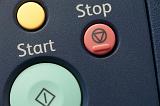How do changes to NICs affect you?
How do changes to NICs affect you?
Spring Statement changes come into effect.
As you may have heard, there are changes happening to National Insurance contributions (NICs).
From 6 July, the new thresholds will come into effect. But what does that mean for you?
As a self-employed worker, you will already pay your National Insurance differently to that of an employee. But now your threshold is changing, you’ll need to know how much by and when.
This article will explain all the changes and what this means for you and your business.
How does National Insurance work?
Before we go into detail about how the new NICs thresholds will affect you, let’s start with an overview of the National Insurance system.
There are different classes of NICs which will vary depending on your employment status and whether you choose to voluntarily pay contributions.
Class 1 NICs are paid by employers and employees. Employees pay Class 1 NICs if they are under the state pension age and earn more than the primary threshold, in the majority of cases. These are automatically deducted by employers.
Class 1A and 1B NICs are paid directly by employers on their employees’ expenses or benefits.
Class 2 NICs are paid by self-employed people earning more than the small profits threshold. If you earn less than this, you can choose to pay voluntary contributions to fill in the gaps in your National Insurance record.
Class 3 NICs are voluntary contributions paid to fill gaps in your National Insurance record. You might need to do this if you are unemployed or earn below certain thresholds.
Class 4 is for self-employed people earning profits above the lower profits limit.
Most self-employed people pay class 2 and class 4 NICs through self-assessment tax returns.
As well as different classes, there are a number of different thresholds based on earnings. For the purposes of this article, though, we’ll focus on the main thresholds at which employed and self-employed individuals start paying NI: the primary threshold for class 1 NICs, the small profits threshold for class 2, and the lower profits limit for class 4.
What’s changing?
As announced in the Spring Statement, both the primary threshold and the lower profits limit are rising from £9,880 to £12,570 as of 6 July 2022, bringing them in line with the income tax personal allowance.
Going forward, the NICs and income tax thresholds will remain aligned.
Aligning these thresholds has been an ambition of the Government’s for a number of years, but the announcement also came ahead of the new health and social care levy, which was introduced in April 2022.
This saw all National Insurance rates, as well as dividend tax rates, increase by 1.25 percentage points. The change is expected to raise £36bn over the next three years to help pay for reforms to health and social care – but it was a controversial decision, increasing taxes for workers when many were already feeling the pressures of rising costs.
In his Spring Statement speech, Chancellor Rishi Sunak insisted “it is right that the health and care levy stays … But a long-term funding solution for the NHS and social care is not incompatible with reducing taxes on working families”.
The £2,700 threshold rise will save employees an average of £330 in National Insurance each year compared to the previous threshold.
The new thresholds for the self-employed
While employees’ National Insurance is deducted by their employer throughout the year, being self-employed means you pay NICs on an annual basis at the end of the tax year.
This means things aren’t as straightforward as implementing a new threshold from July. Instead, the lower profits limit for class 4 NICs will rise to an apportioned threshold of £11,908 in 2022/23 – allowing for 13 weeks under the previous threshold and 39 weeks at the new threshold.
Taken together with the rate increases, this means self-employed profits between £11,908 and £50,270 will be charged at 10.25% in 2022/23, and anything over £50,270 will be charged at 3.25%.
From April 2023 onwards, the self-employed will be able to earn £12,570 before paying any NICs
Meanwhile, class 2 NICs liabilities have been reduced to nil on profits between the small profits threshold and the lower profits limit, which will allow individuals to continue to build up National Insurance credits.
To receive the credits, you’ll have to submit a tax return – but if you have no other income that year you won’t have to pay any tax.
How will you be affected?
The main change you can expect to see is a difference in your take home pay.
A higher threshold means you’ll be able to earn more before having to pay National Insurance. From July, the Government says around 70% of NICs payers will be paying less, even with the introduction of the health and social care levy.
The change to class 2 NICs will provide a tax cut for 500,000 self-employed people and is worth up to £165 per year.
That said, actual gains for individuals will be different depending on their circumstances.
For example, if you had annual profits of £20,000 over the 2021/22 tax year, you would be expected to pay £1,097.48 in Class 2 and 4 NICs. With the threshold increase that would go down to £994.31, representing a saving of £103.17.
If you would like to know more about the NICs threshold changes, talking to us for advice is the best next step.
Get in touch about your NICs.




